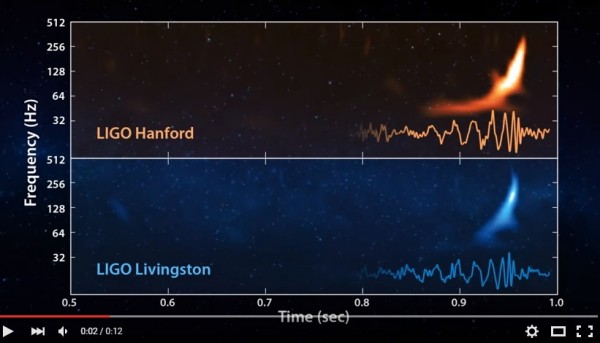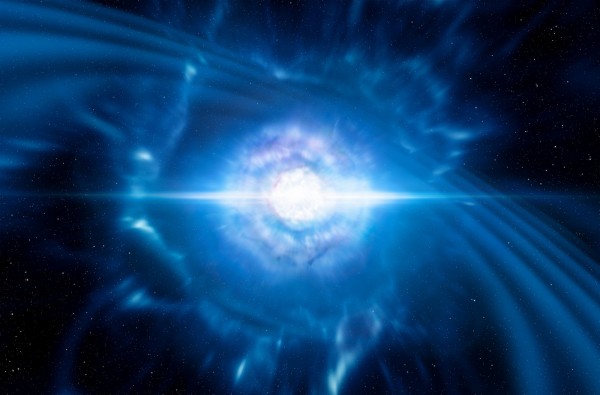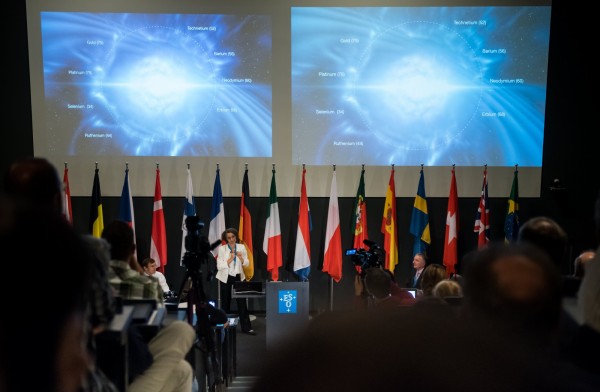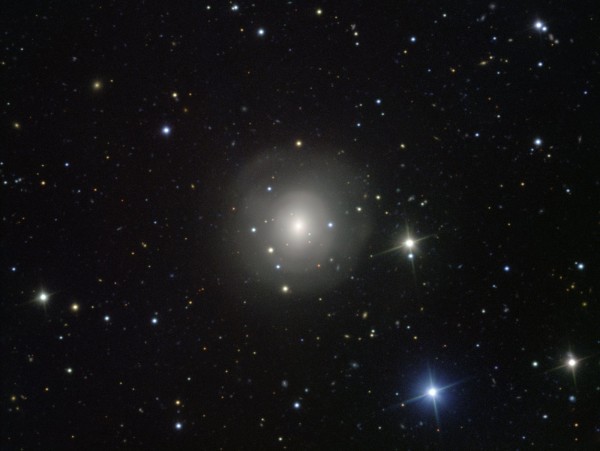Planet Jupiter: Facts About Its Size, Moons and Red Spot
Credit: Jimmy Eubanks
Jupiter is the largest planet in the solar system. Fittingly, it was named after the king of the gods in Roman mythology. In a similar manner, the ancient Greeks named the planet after Zeus, the king of the Greek pantheon.
Jupiter helped revolutionize the way we saw the universe and ourselves in 1610, when Galileo discovered Jupiter’s four large moons — Io, Europa, Ganymede and Callisto, now known as the Galilean moons. This was the first time that celestial bodies were seen circling an object other than Earth, major support of the Copernican view that Earth was not the center of the universe.
Physical characteristics
Jupiter is the most massive planet in our solar system, more than twice as massive as all the other planets combined, and had it been about 80 times more massive, it would have actually become a star instead of a planet. Its atmosphere resembles that of the sun, made up mostly of hydrogen and helium, and with four large moons and many smaller moons in orbit around it, Jupiter by itself forms a kind of miniature solar system. All told, the immense volume of Jupiter could hold more than 1,300 Earths.
The colorful bands of Jupiter are arranged in dark belts and light zones created by strong east-west winds in the planet’s upper atmosphere traveling more than 400 mph (640 km/h). The white clouds in the zones are made of crystals of frozen ammonia, while darker clouds of other chemicals are found in the belts. At the deepest visible levels are blue clouds. Far from being static, the stripes of clouds change over time. Inside the atmosphere, diamond rain may fill the skies.
The most extraordinary feature on Jupiter is undoubtedly the Great Red Spot, a giant hurricane-like storm seen for more than 300 years. At its widest, the Great Red Spot is three times the diameter of the Earth, and its edge spins counterclockwise around its center at a speed of about 225 mph (360 km/h). The color of the storm, which usually varies from brick red to slightly brown, may come from small amounts of sulfur and phosphorus in the ammonia crystals in Jupiter’s clouds. grows and shrinks. The spot has been shrinkingfor quite some time, although the rate may be slowing in recent years.
Jupiter’s gargantuan magnetic field is the strongest of all the planets in the solar system at nearly 20,000 times the strength of Earth’s. It traps electrically charged particles in an intense belt of electrons and other electrically charged particles that regularly blasts the planet’s moons and rings with a level of radiation more than 1,000 times the lethal level for a human, damaging even heavily shielded spacecraft such as NASA’s Galileo probe. The magnetosphere of Jupiter, which is composed of these fields and particles, swells out some 600,000 to 2 million miles (1 million to 3 million km) toward the sun and tapers to a tail extending more than 600 million miles (1 billion km) behind Jupiter.
Jupiter spins faster than any other planet, taking a little under 10 hours to complete a turn on its axis, compared with 24 hours for Earth. This rapid spin makes Jupiter bulge at the equator and flatten at the poles, making the planet about 7 percent wider at the equator than at the poles.
Jupiter broadcasts radio waves strong enough to detect on Earth. These come in two forms — strong bursts that occur when Io, the closest of Jupiter’s large moons, passes through certain regions of Jupiter’s magnetic field, and continuous radiation from Jupiter’s surface and high-energy particles in its radiation belts. These radio waves could help scientists to probe the oceanson its moons.
Some of Jupiter’s parameters, according to NASA:

Composition & structure
Atmospheric composition (by volume): 89.8 percent molecular hydrogen, 10.2 percent helium, minor amounts of methane, ammonia, hydrogen deuteride, ethane, water, ammonia ice aerosols, water ice aerosols, ammonia hydrosulfide aerosols
Magnetic field: Nearly 20,000 times stronger than Earth’s
Chemical composition: Jupiter has a dense core of uncertain composition, surrounded by a helium-rich layer of fluid metallic hydrogen, wrapped up in an atmosphere primarily made of molecular hydrogen.
Internal structure: A core less than 10 times Earth’s mass surrounded by a layer of fluid metallic hydrogen extending out to 80 to 90 percent of the diameter of the planet, enclosed in an atmosphere mostly made of gaseous and liquid hydrogen.
Orbit & rotation
Average distance from the sun: 483,682,810 miles (778,412,020 km). By comparison: 5.203 times that of Earth
Perihelion (closest approach to the sun): 460,276,100 miles (740,742,600 km). By comparison: 5.036 times that of Earth
Aphelion (farthest distance from the sun): 507,089,500 miles (816,081,400 km). By comparison: 5.366 times that of Earth
Jupiter’s moons
Jupiter has at least 63 moons, which are often named after the Roman god’s many lovers. The four largest moons of Jupiter, now called Io, Europa, Ganymede, and Callisto, were discovered by Galileo Galilei himself, and are appropriately known today as the Galilean satellites.
Ganymede is the largest moon in our solar system, larger even than Mercury and Pluto. It is also the only moon known to have its own magnetic field. The moon has at least one thick ocean between layers of ice, although it may contain several layers of both materials. This moon will be the main target of the European Jupiter Icy Moons Explorer (JUICE) that will launch in 2022 and arrive at Jupiter’s system in 2030.
Io is the most volcanically active body in our solar system. The sulfur its volcanoes spew out gives Io a blotted yellow-orange appearance that is often compared to a pepperoni pizza. As Io orbits Jupiter, the planet’s immense gravity causes “tides” in Io’s solid surface that rise 300 feet (100 meters) high, generating enough heat for volcanic activity.
The frozen crust of Europa is made up mostly of water ice, and it may hide a liquid ocean holding twice as much water as Earth does. Icy oceans may also exist beneath the crusts of Callisto and Ganymede. Some of this liquid spouts from the surface in newly spotted sporadic plumes at the southern pole. mission to explore Europa NASA is now in Phase B (the design stage) of the Europa Clipper mission, a planned spacecraft that would launch in the 2020s to examine the habitability of the moon, performing 40 to 45 flybys.
Callisto has the lowest reflectivity, or albedo, of the four Galilean moons. This suggests that its surface may be composed of dark, colorless rock.
Jupiter’s rings
Jupiter’s three rings came as a surprise when NASA’s Voyager 1 spacecraft discovered them around the planet’s equator in 1979. Each are much fainter than Saturn’s rings.
The main ring is flattened. It is about 20 miles (30 km) thick and more than 4,000 miles (6,400 km) wide.
The inner cloud-like ring, called the halo, is roughly 12,000 miles (20,000 km) thick. The halo extends halfway from the main ring down to the planet’s cloud tops and expands by interaction with Jupiter’s magnetic field. Both the main ring and halo are composed of small, dark particles.
The third ring, known as the gossamer ring because of its transparency, is actually three rings of microscopic debris from three of Jupiter’s moons, Amalthea, Thebe and Adrastea. It is probably made up of dust particles less than 10 microns in diameter, about the same size of the particles found in cigarette smoke, and extends to an outer edge of about 80,000 miles (129,000 km) from the center of the planet and inward to about 18,600 miles (30,000 km).
Ripples in the rings of both Jupiter and Saturn may be signs of impacts from comets and asteroids.
Research & exploration
Seven missions have flown by Jupiter — Pioneer 10, Pioneer 11, Voyager 1, Voyager 2, Ulysses, Cassini and New Horizons. Two missions – NASA’s Galileo and Juno missions – have actually orbited the planet. Two missions are planned to study Jupiter’s moons: NASA’s Europa Clipper (which would launch in the 2020s) and the European Space Agency’s Jupiter Icy Moons Explorer (JUICE) that will launch in 2022 and arrive at Jupiter’s system in 2030 to study Ganymede, Callisto and Europa.
Pioneer 10 revealed how dangerous Jupiter’s radiation belt is, while Pioneer 11 provided data on the Great Red Spot and close-up pictures of its polar region. Voyager 1 and 2 helped astronomers create the first detailed maps of the Galilean satellites, discovered Jupiter’s rings, revealed sulfur volcanoes on Io, and saw lightning in Jupiter’s clouds. Ulysses discovered the solar wind has a much greater impact on Jupiter’s magnetosphere than before suggested. New Horizons took close-up pictures of Jupiter and its largest moons.
In 1995, Galileo sent a probe plunging towards Jupiter, making the first direct measurements of its atmosphere and measuring the amount of water and other chemicals there. When Galileo ran low on fuel, the craft was intentionally crashed into Jupiter’s atmosphere to avoid any risk of it slamming into and contaminating Europa, which might have an ocean below its surface capable of supporting life.
Juno is the only mission at Jupiter currently. Juno studies Jupiter from a polar orbit to figure out how it and the rest of the solar system formed, which could shed light on how alien planetary systems might have developed. One of its key findings so far was discovering that Jupiter’s core may be larger than what scientists expected.
Jupiter’s gravitational impact on the solar system
As the most massive body in the solar system after the sun, the pull of Jupiter’s gravity has helped shape the fate of our system. It may have violently hurled Neptune and Uranus outward, according to calculations published in the journal Nature. Jupiter, along with Saturn, may have slung a barrage of debris toward the inner planets early in the system’s history, although some scientists debate how much of a role each planet played in moving the asteroids around. It may even nowadays help keep asteroids from bombarding Earth, and recent events certainly have shown that it can absorb potentially deadly impacts. Observations by amateurs have shown that Jupiter receives a few impacts per decade, far more than what was predicted when Comet Shoemaker Levy-9 crashed into the planet in 1994.
Currently, Jupiter’s gravitational field influences numerous asteroids that have clustered into the regions preceding and following Jupiter in its orbit around the sun. These are known as the Trojan asteroids, after three large asteroids there, Agamemnon, Achilles and Hector, names drawn from the Iliad, Homer’s epic about the Trojan War.
Possibility of life on Jupiter
If one were to dive into Jupiter’s atmosphere, one would discover it to grow warmer with depth, reaching room temperature, or 70 degrees F (21 degrees C), at an altitude where the atmospheric pressure is about 10 times as great as it is on Earth. Scientists have conjectured that if Jupiter has any form of life, it might dwell at this level, and would have to be airborne. However, researchers have found no evidence for life on Jupiter.
Additional reporting by Elizabeth Howell and Nola Taylor Redd, Space.com Contributors
 愛因斯坦100年前最瘋狂的預測「重力波」,如今真的得到科學家證實,更被稱為「宇宙的聲音」。(圖片擷取自YouTube)
愛因斯坦100年前最瘋狂的預測「重力波」,如今真的得到科學家證實,更被稱為「宇宙的聲音」。(圖片擷取自YouTube) 科學家週一(16日)宣布,人類首次觀測到2個中子星激烈碰撞產生的重力波的光。(法新社)
科學家週一(16日)宣布,人類首次觀測到2個中子星激烈碰撞產生的重力波的光。(法新社)
